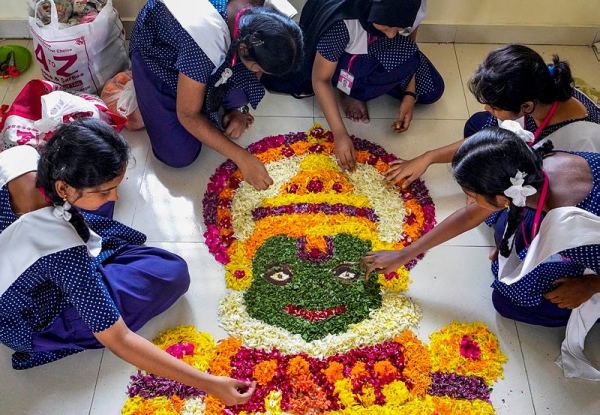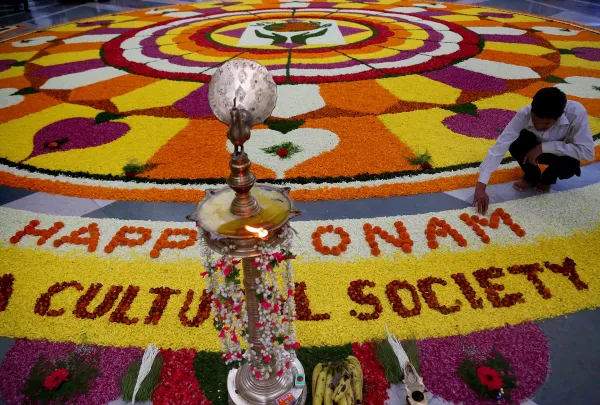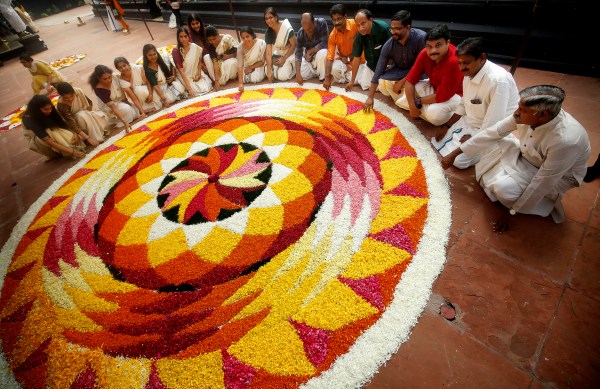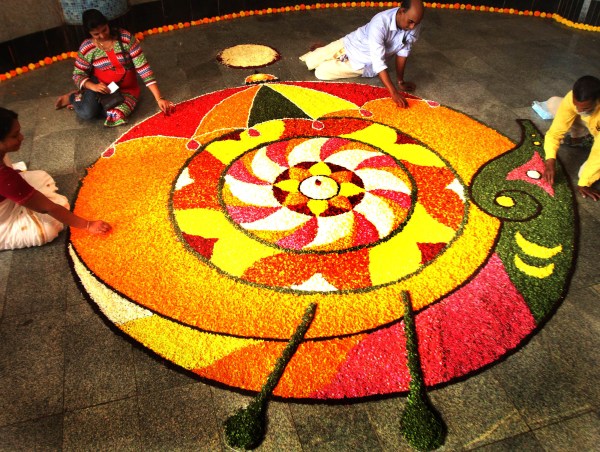Pookalam: Floral Threads of Onam’s History
Pookalam not only celebrates the harvest but also highlights the importance of preserving cultural practices
Onam, the harvest festival of Kerala, sweeps through the land like a gentle breeze of autumn, bringing with it the fragrance of flowers and the vibrancy of colours that carpet the ground. AND An intrinsic part of the festivities is Pookalam, also called Pookolam, a stunning floral arrangement that brings together communities and weaves a tradition that is mesmerising and beautiful.
 Students participate in a ‘pookalam’ making competion. Picture: PTI Photo/R Senthil Kumar
Students participate in a ‘pookalam’ making competion. Picture: PTI Photo/R Senthil Kumar
How Kerala Came To Make Flower Rangolis
Pookalam, also referred to as Athapookalam, is often made in a circular shape with flowers. The name has two parts: ‘Poo’ refers to flowers and ‘Kolam’ translates to the design of the rangoli. The history of Pookalam traces back to ancient legends and mythology. According to one popular myth, Pookalam originated from the story of King Mahabali (also called Mahaveli), a legendary ruler of Kerala, who was tested by Lord Vishnu’s fifth avatar, and was sent to Paatal Lok, but with a boon that allowed him to return to his kingdom once a year. It is believed that on the occasion of Onam, King Mahabali visits his kingdom, and to welcome him, the people of Kerala create intricate floral patterns outside their homes. These patterns gradually evolved into the artful Pookalams we see today.
 A large pookalam on the occasion of Onam festival. Picture: Express Photo by Amit Chakravarty
A large pookalam on the occasion of Onam festival. Picture: Express Photo by Amit Chakravarty
Floral Symphony
While the arrangement might look deceptively simple, making a pookalam requires precision, creativity and of course, an eye for colours. Traditionally, Pookalams contain ten local varieties of flowers (Dashapushpam) but there is no rigidity about the same. People use all varieties that are available in the market.
 Picture: Express Photo By Praveen Khanna
Picture: Express Photo By Praveen Khanna
These flowers are then carefully arranged in intricate patterns, often forming concentric circles, where each layer is designed to be dedicated to different deities which include Lord Shiva and Goddess Parvati, their sons Ganesha and Kartikeya, Lord Brahma, the fifth avatar of Lord Vishnu (Vamana) and King Mahabali. It is not a mere design but is a greater act that connects people to the divinity they worship.
 This pookalam took almost seven hours to complete. Picture: Express Photo by Deepak Joshi
This pookalam took almost seven hours to complete. Picture: Express Photo by Deepak Joshi







 Pookalam is an integral part of Onam celebrations. Picture: Shutterstock
Pookalam is an integral part of Onam celebrations. Picture: Shutterstock



